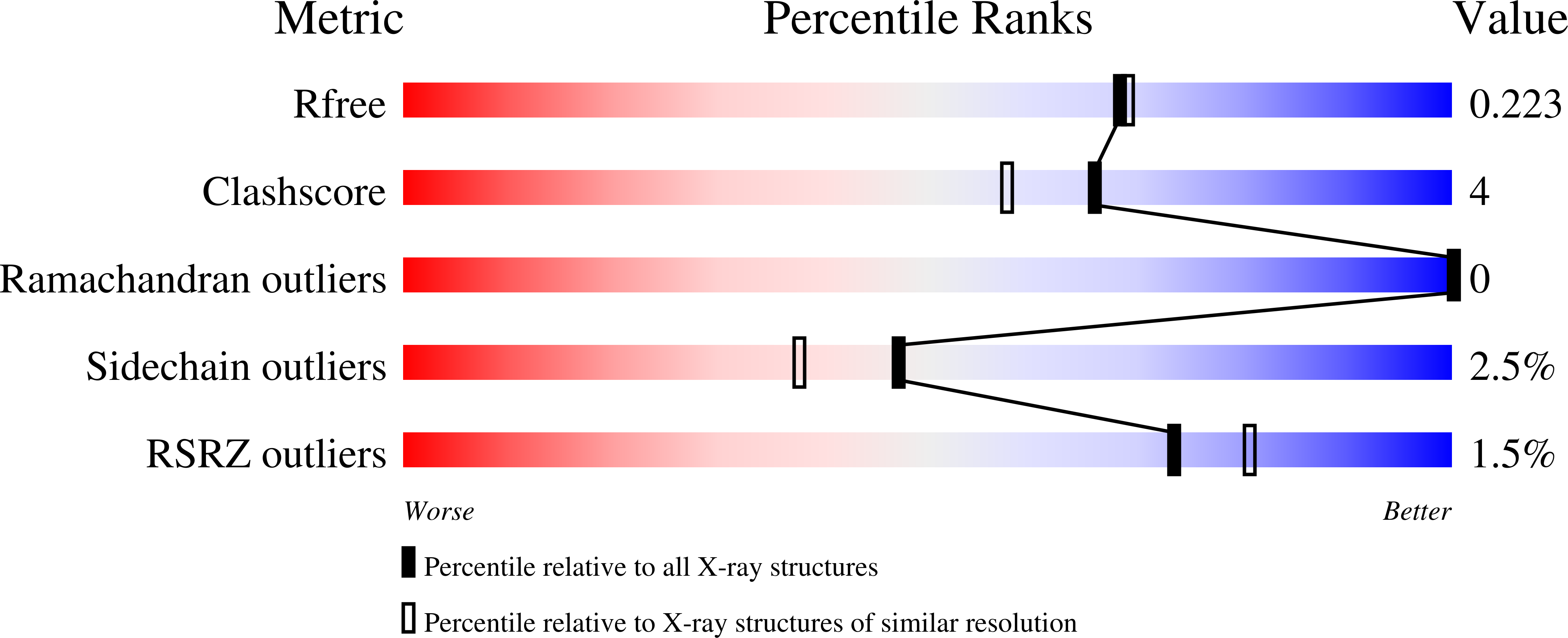An unusual mechanism of thymidylate biosynthesis in organisms containing the thyX gene.
Koehn, E.M., Fleischmann, T., Conrad, J.A., Palfey, B.A., Lesley, S.A., Mathews, I.I., Kohen, A.(2009) Nature 458: 919-923
- PubMed: 19370033
- DOI: https://doi.org/10.1038/nature07973
- Primary Citation of Related Structures:
3G4A, 3G4C - PubMed Abstract:
Biosynthesis of the DNA base thymine depends on activity of the enzyme thymidylate synthase to catalyse the methylation of the uracil moiety of 2'-deoxyuridine-5'-monophosphate. All known thymidylate synthases rely on an active site residue of the enzyme to activate 2'-deoxyuridine-5'-monophosphate. This functionality has been demonstrated for classical thymidylate synthases, including human thymidylate synthase, and is instrumental in mechanism-based inhibition of these enzymes. Here we report an example of thymidylate biosynthesis that occurs without an enzymatic nucleophile. This unusual biosynthetic pathway occurs in organisms containing the thyX gene, which codes for a flavin-dependent thymidylate synthase (FDTS), and is present in several human pathogens. Our findings indicate that the putative active site nucleophile is not required for FDTS catalysis, and no alternative nucleophilic residues capable of serving this function can be identified. Instead, our findings suggest that a hydride equivalent (that is, a proton and two electrons) is transferred from the reduced flavin cofactor directly to the uracil ring, followed by an isomerization of the intermediate to form the product, 2'-deoxythymidine-5'-monophosphate. These observations indicate a very different chemical cascade than that of classical thymidylate synthases or any other known biological methylation. The findings and chemical mechanism proposed here, together with available structural data, suggest that selective inhibition of FDTSs, with little effect on human thymine biosynthesis, should be feasible. Because several human pathogens depend on FDTS for DNA biosynthesis, its unique mechanism makes it an attractive target for antibiotic drugs.
Organizational Affiliation:
Department of Chemistry, University of Iowa, Iowa City, Iowa 52242, USA.
















